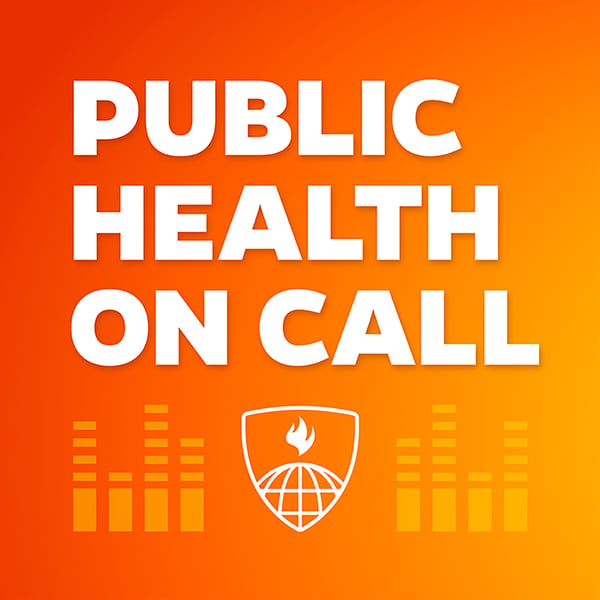893 - “On Going Backwards”: A New HIV/AIDS Epidemic?
Public Health On Call
The Johns Hopkins Bloomberg School of Public Health
4.8 • 620 Ratings
🗓️ 14 May 2025
⏱️ 18 minutes
🧾️ Download transcript
Summary
About this episode:
In 2003, George W. Bush’s President’s Emergency Plan for AIDS Relief (PEPFAR) was the largest commitment to a single disease in U.S. history. Renewed under every subsequent presidency since, PEPFAR has saved more than 25 million lives and prevented some 5 million perinatal infections globally. But now, policy changes that effectively end PEPFAR have the potential to completely reverse course and the world could see HIV/AIDS infections on par with a time even before effective antivirals existed. In this episode: Dr. Chris Beyrer talks about his recent Lancet essay, “On Going Backwards,” why any retreat now will make it harder to regain lost ground, and how this policy change has the potential to impact millions of lives.
Guest:
Dr. Chris Beyrer is the past president of the International AIDS Society and an expert in global health and human rights.
Host:
Stephanie Desmon, MA, is a former journalist, author, and the director of public relations and communications for the Johns Hopkins Center for Communication Programs at the Johns Hopkins Bloomberg School of Public Health.
Show links and related content:
-
On Going Backwards—The Lancet (Perspectives)
-
By executive order: The likely deadly consequences associated with a 90-day pause in PEPFAR funding—Journal of the International AIDS Society
Transcript information:
Looking for episode transcripts? Open our podcast on the Apple Podcasts app (desktop or mobile) or the Spotify mobile app to access an auto-generated transcript of any episode. Closed captioning is also available for every episode on our YouTube channel.
Contact us:
Have a question about something you heard? Looking for a transcript? Want to suggest a topic or guest? Contact us via email or visit our website.
Follow us:
-
Here's our RSS feed
Note: These podcasts are a conversation between the participants, and do not represent the position of Johns Hopkins University.
Transcript
Click on a timestamp to play from that location
| 0:00.0 | Welcome to Public Health On Call, a podcast from the Johns Hopkins Bloomberg School of Public Health, |
| 0:05.9 | where we bring evidence, experience, and perspective to make sense of today's leading health challenges. |
| 0:16.3 | If you have questions or ideas for us, please send an email to public health question at jh.h.edu. |
| 0:23.8 | That's public health question at jh.h.u.org for future podcast episodes. |
| 0:31.1 | Hi, listeners. It's Lindsay Smith-Rogers. |
| 0:33.6 | What will happen to the incredible progress that has been made around the world in HIV-AIDS prevention and treatment since the 1980s? |
| 0:42.0 | Today, Stephanie Desmond talks to Dr. Chris Beir, past president of the International AIDS Society, about who is impacted when prevention is halted and treatment is paused, and what the future of HIV prevention everywhere |
| 0:55.4 | looks like after massive cuts to the president's emergency plan for AIDS relief, also known as |
| 1:02.1 | PEPFAR. Let's listen. Chris Beyer, thanks so much for joining me. Wonderful to be with you again, |
| 1:07.7 | Stephanie. Your most recent piece in The Lancet is subtitled |
| 1:11.8 | ongoing backwards. Could you unpack that for me? So, you know, the largest commitment to a |
| 1:19.0 | single disease in history was the program begun by George W. Bush in 2003 called PEPFAR, |
| 1:26.6 | the president's emergency plan for AIDS relief. |
| 1:30.4 | And PEPFAR was an extraordinary commitment to really try and bring antiviral therapy for |
| 1:36.4 | HIV infection to the great majority of people in the world living with HIV, who were, of course, |
| 1:42.5 | mostly in sub-Saharan Africa. |
| 1:44.9 | And until then, we had effective therapy, but really there was almost no access for the great |
| 1:50.6 | majority of people in low- and middle-income countries. |
| 1:53.9 | And all of that changed with an extraordinary $15 billion commitment over five years that was |
| 1:59.5 | renewed repeatedly under consecutive administrations, |
| 2:02.9 | including the first Trump administration. And the program was an extraordinary success. It saved an |
| 2:09.2 | estimated 25 million lives. It prevented perhaps five million perinatal infections, which is such |
... |
Please login to see the full transcript.
Disclaimer: The podcast and artwork embedded on this page are from The Johns Hopkins Bloomberg School of Public Health, and are the property of its owner and not affiliated with or endorsed by Tapesearch.
Generated transcripts are the property of The Johns Hopkins Bloomberg School of Public Health and are distributed freely under the Fair Use doctrine. Transcripts generated by Tapesearch are not guaranteed to be accurate.
Copyright © Tapesearch 2025.

